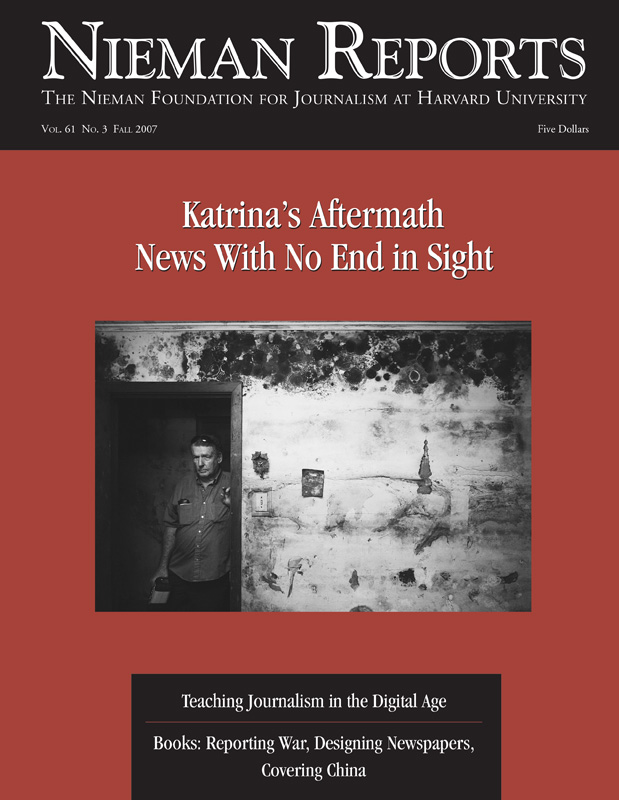ISSUE
Fall 2007

Katrina's Aftermath: News With No End in Sight
It’s been two years since Hurricane Katrina’s destructive force riveted the eyes of the world on the suffering of those left in its wake. In that time, newspapers in New Orleans and Mississippi have made adjustments while national news organizations wrestle with finding fresh ways to engage distant audiences. In this collection, written by journalists who have spent significant time trying to tell this story, Nieman Reports explores particular demands and difficulties posed by coverage of an ongoing news event with no end in sight.
